Buccaneer Lore
Buccaneers, swashbucklers, pirates, privateers,
seadogs, corsairs ...
They all sailed "the
Spanish Main" during the days of frigates and sloops, brigs, schooners
and galleons.
The heyday of the buccaneers was from circa 1650-1725 when working
either individually or in great pirate fleets out of strongholds like Port Royal
of
Jamaica, they raided as far north as Canada and as far
south as Brazil and equatorial Africa. Their targets of choice were not only
Spanish treasure galleons and rich merchant vessels but also coastal towns and
cities in Cuba, Mexico, Venezuela and the many small but valuable islands of
the Greater and Lesser Antilles chains of the Caribbean Sea. Though mainly a 17th
and 18th century phenomenon, piracy in the Caribbean did have a brief
resurgence around 1820 before disappearing.
Some swashbucklers operated legally, by commission, in time of war such as
the privateers (private vessels licensed by their government with a "letter of
marque" to prey upon enemy commerce) which abounded during the naval wars
of the 1600s, the American
Revolution, the Napoleonic Wars and the
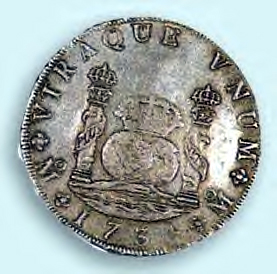 War of 1812. Others were entirely outside the
law. Still others moved in and out of legality with ease as the circumstances
suited them.
War of 1812. Others were entirely outside the
law. Still others moved in and out of legality with ease as the circumstances
suited them.
They were Englishmen, Scotsmen, Welshmen, Dutchmen,
Frenchmen, Spaniards, Portuguese, Danes, Americans, Indians and Africans. Some
were loyal to their king, some to their fellow buccaneers and some only to
themselves. Some had impeccable manners, some were implacable thugs. Now and
again they would gather and celebrate the success of a great raid from which
all returned laden with booty.
Yohoho... Avast there matey... Pieces of eight,
pieces of eight... Dance a proper jig or walk the plank. Booty for all
and plunder a'plenty. Shiver me timbers and boarders away... A r r
r r...
Sail on to
The 2007 Buccaneers' Ball
The 2006 Buccaneers' Ball
The 2005 Buccaneers' Ball
17th & 18th Century Reenacting
The
American Heritage Festival
We Make History

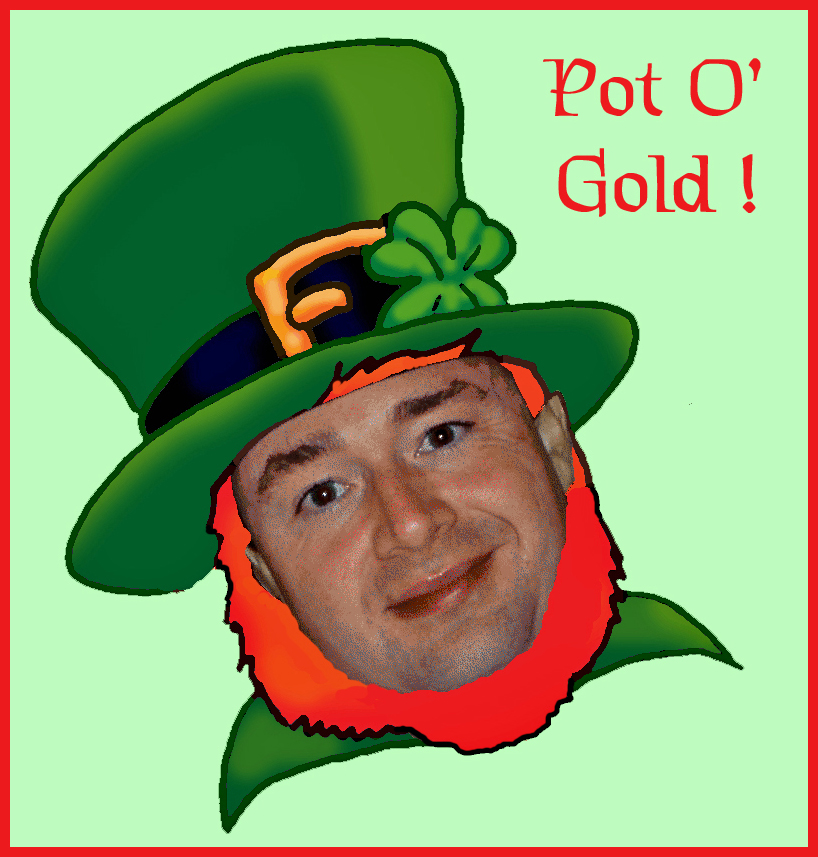
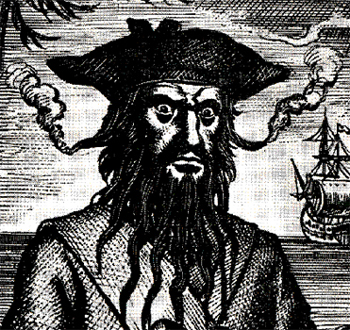
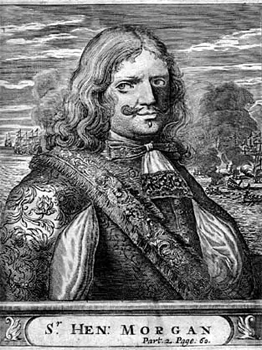
Sir Henry Morgan 1635-1688
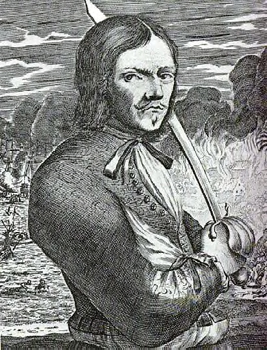
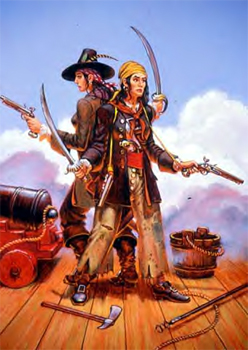
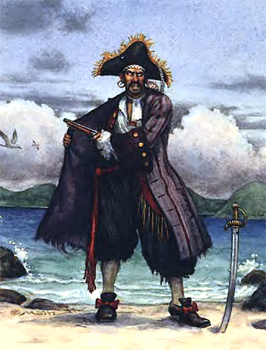
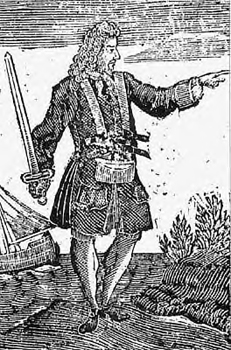
Allow us to state the obvious.The real
pirates
of history were not nice people.
No one wants to recreate negative aspects of their behavior or activities in any
actual or literal sense.
But after 300 years of time passage and accompanying cultural drift, the
idea of a pirate has become a mere
caricature, a light hearted bit of play acting which many have a good time with.
For us the idea of the Buccaneers' Ball is simply to "open
things up a bit" with an unusual theme for our guests to enjoy and in which to
exercise their creativity and imaginations.
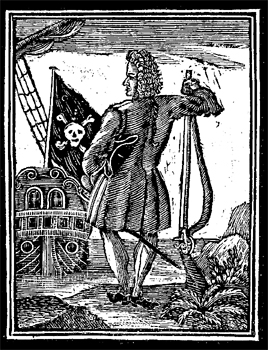
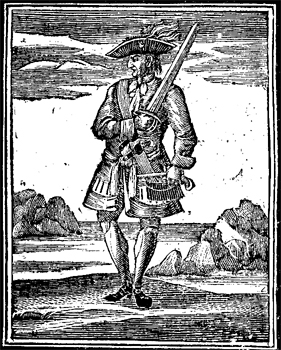
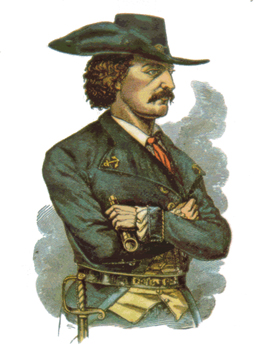
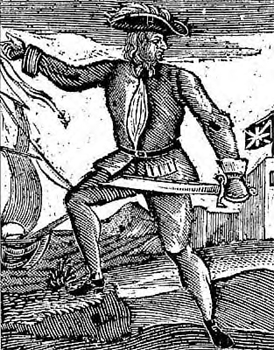
John "Calico Jack" Rackham
For possibly the best pirate movie ever made see "Captain Blood", the
1935 production starring Errol Flynn and Olivia de Havilland. The film begins
in England in 1685 against the historic backdrop of the aftermath of
Monmouth's Rebellion. In fact as the film progresses it keeps apace with real
historic events and personalities of the times. Also a treat is the liberal
sprinkling of 17th century vocabulary, phrases and grammar which ought to be
obligatory for a period piece and add so much to the enjoyment thereof.
Edward "Blackbeard" Teach 1680?-1718
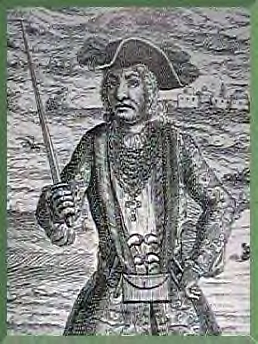
Bartholomew Roberts 1682-1722
Female Pirates? Arrrrrrrrr....
Anne Bonny and Mary Read sailed with
Anne's husband(?) Calico Jack. The women were known to dress in female attire
during quiet times but to don male apparel when battle was imminent. They had
quite a piratical career before being captured in 1722, only escaping the
gallows by claim of pregnancy. Mary Read died in prison but Anne Bonny's fate
is unknown.
Apparently marooned along with "The Skipper" in 1964, Ginger Grant and Mary
Ann Summers soon became active participants in the adventures of the crew of
the S.S. Minnow.
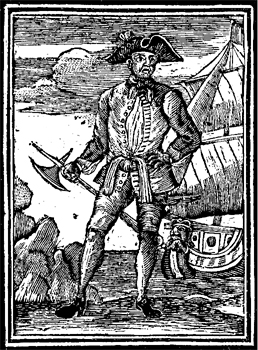

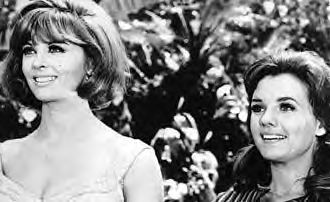
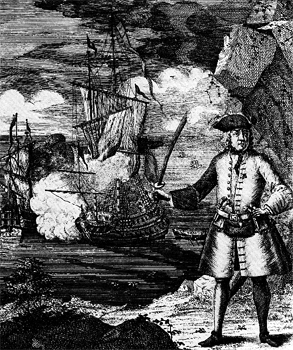
Ginger Grant & Mary Ann Summers
Brief Pirate BiographiesSir Henry
Morgan was undoubtedly the most successful of all
buccaneers. Operating sometimes legally and sometimes questionably, his
greatest adventures took place during time of war against Spain. Sailing out
of Port Royal, Jamaica he led huge raids capturing Spanish cities in Cuba, Mexico,
Nicaragua, Panama and Venezuela. In his 1670 expedition against Panama City he
commanded over 2,000 English, French and Dutch buccaneers in 40 ships and captured 100,000 English pounds worth
of booty.
William Kidd, originally of
Scotland had been a legal British privateer before being commissioned by the
colonies of New York and Massachusetts to hunt down pirates. Unfortunately, he
then appears to have become a pirate himself in a seafaring example of "good cop gone bad."
Though protesting his innocence to the end he
was hanged in 1701.
Edward "Blackbeard" Teach is
possibly the most infamous of all pirates. At one time commanding four ships
and 300 men he was a force to be reckoned with and captured over forty vessels
during his brief but violent and notorious career. Teach was a large man and
opted for an intimidating appearance, wearing a long black beard (at a time
when men were clean shaven) and separating his hair into longs strands some of
which were tied with ribbons but others with smoking tapers which he would
light when going into battle thus looking unusually ferocious. At one point Teach accepted an offer of
amnesty from the Governor of North Carolina but soon went back to his old
ways. In 1718 his ship was boarded in Ocracoke Inlet by government troops and
a savage melee ensued with Blackbeard finally going down after receiving five
bullet wounds and over twenty cuts from swords.
Stede Bonnet was a gentleman
planter of means who owned a lucrative sugar plantation on the island of
Barbados. For reasons never known for certain to any but himself (though it
was rumored he desired to escape a nagging, shrewish wife) he suddenly purchased and
armed a ship which he named the "Revenge", hired a crew and turned pirate. For a time he even fell in with the infamous Blackbeard.
After one failed attempt at reform, Stede went back to piracy but was captured
and hung at Charles Towne, South Carolina in 1718.
John "Calico Jack" Rackham
earned his nickname by the calico coats and breeches he wore. He advanced from
pirate to pirate captain when the former captain refused to attack a certain
French ship and was deposed. In company with Anne Bonny and Mary Read his
piratical career ended in 1720 when their ship was boarded and the three were captured. Taken to Jamaica he was hung along with most of his crew.
Bartholomew "Black Bart" Roberts was one of
the most bold and feared pirates. Known as both "brave" and "wicked" he had a
fondness for flamboyant silk clothing including crimson waistcoat and
breeches. Unusual for a pirate he neither drank liquor not gambled. During his four year career Roberts captured 400 ships and raided
all the way from Newfoundland to South America and from the Caribbean to
Africa where he was finally killed in naval combat with the British ship
HMS Swallow in early 1722.
Jean Lafitte was a French
pirate and smuggler operating from Louisiana when he offered the services of
himself and his men to General Andrew Jackson in defense against British
invasion. The British were defeated at the Battle of New Orleans in 1815 and
Lafitte was pardoned for his former activities. Though he never troubled
American shipping again he renewed depredations against the Spanish and even
held Galveston for a time. He died circa 1822.
The
Skipper was a mercurial man with a quick temper who
often beat his first mate with his hat. Through several decades of the late
20th century his afternoon excursions held millions captive.
The music playing is "Maid of Amsterdam," a favorite of
sailors since it was written in London in 1608.
Jonas "The Skipper" Grumby
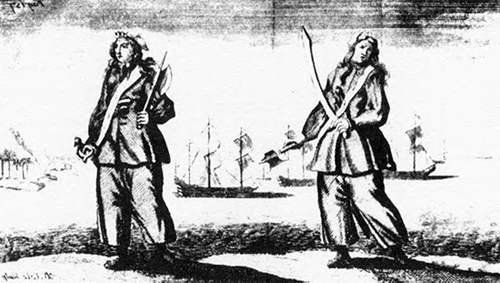
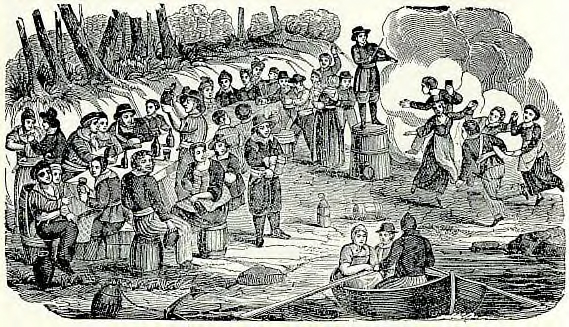
17th century pirates celebrate with fiddling and dancing.
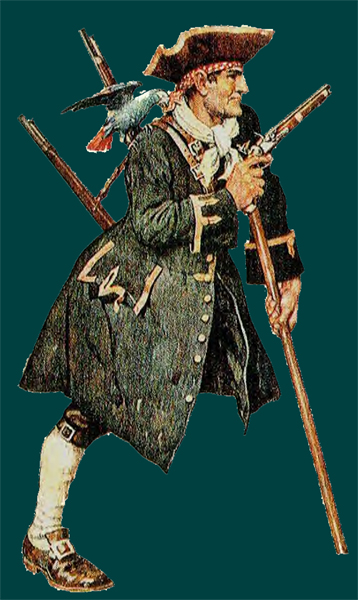
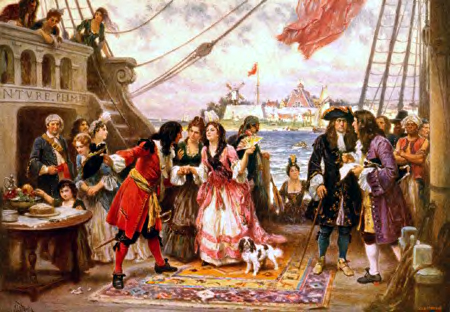
Captain Kidd in New York circa 1700. The ladies are wearing "fontange"
hairstyles. Very fashionable!
 War of 1812. Others were entirely outside the
law. Still others moved in and out of legality with ease as the circumstances
suited them.
War of 1812. Others were entirely outside the
law. Still others moved in and out of legality with ease as the circumstances
suited them. 



















